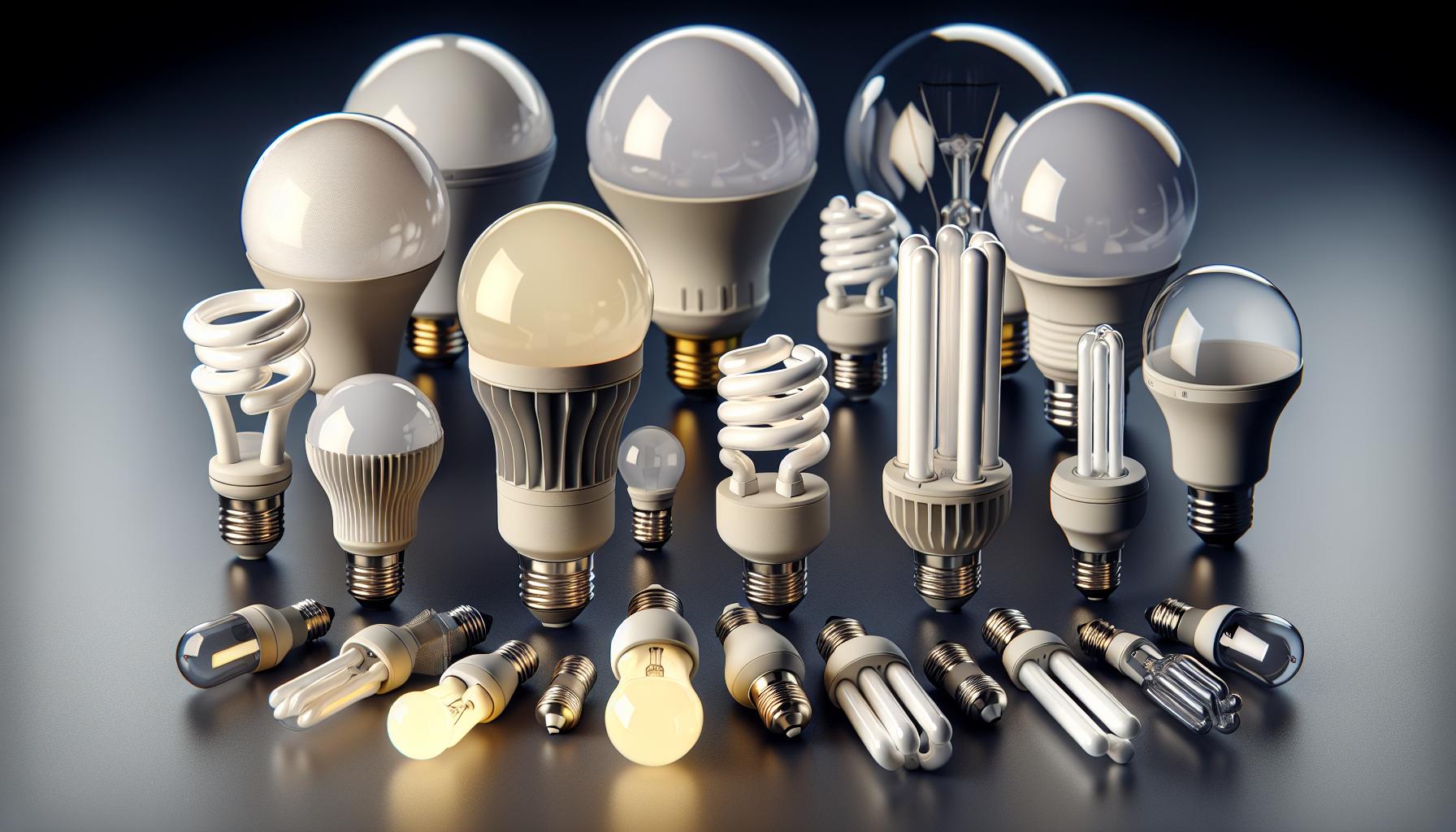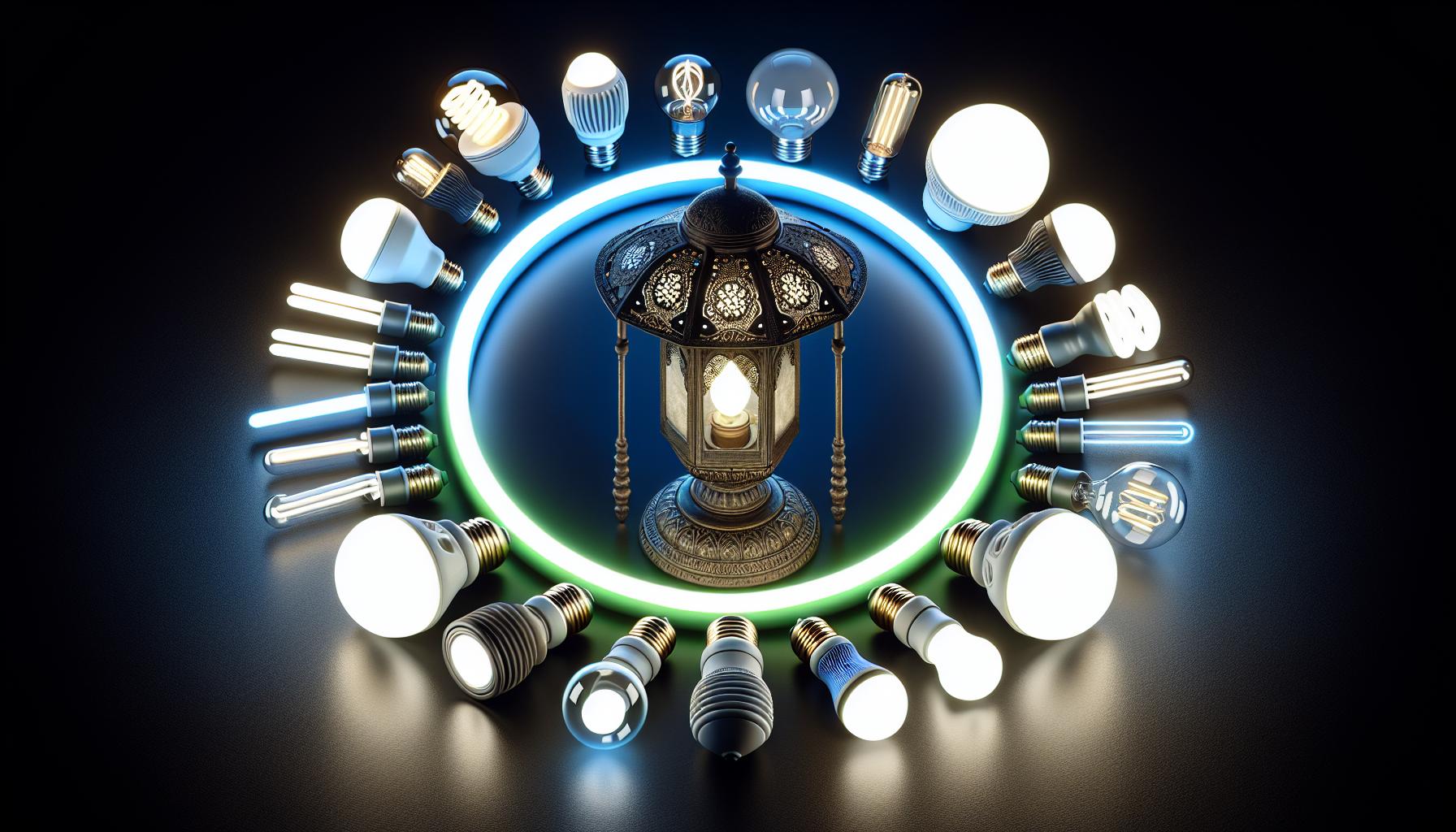Ever reached up to change a light bulb and pulled back a scorched finger? You’re not alone. It’s a common experience, but it begs the question: should light bulbs really get that hot?

The truth is, the heat of a light bulb can be both a sign of normal operation and a red flag. Understanding the difference is key to not only your comfort but also your safety. Let’s shed some light on this hot topic and find out what’s normal and what’s not.
How Light Bulbs Work
Ever wondered how the simple flick of a switch can bathe your room in light? Understanding how light bulbs work is key to appreciating why they emit heat. At the heart of it, light bulbs are devices that convert electricity into light—though the process varies by the type of bulb.
Incandescent bulbs, the classic type you might picture when you think of a light bulb, operate by passing electricity through a filament — typically made of tungsten. When you flip that switch, you’re sending an electrical current through the filament which is so thin that it offers a lot of resistance to the electricity. This resistance generates heat, causing the filament to glow and produce light — a process known as incandescence. It’s an old-school method that has lit homes for generations, but it’s not particularly energy-efficient. Most of the energy is transformed into heat rather than light.
On the other hand, LEDs (Light Emitting Diodes) work on a different principle altogether. These modern alternatives involve the movement of electrons through a semiconductor material. When electrons move through this material, they emit photons, which we see as light. The process, known as electroluminescence, is much more efficient than incandescence, with less heat generated as a by-product. Similarly, CFLs (Compact Fluorescent Lamps) produce light via the excitation of gases inside the bulb when electrified, resulting in ultraviolet light that is transformed into visible light by a fluorescent coating inside the bulb.
Here’s a brief comparison of the heat produced by different types of bulbs:
| Bulb Type | Heat Production |
|---|---|
| Incandescent | High |
| LED | Low |
| CFL | Moderate |
Next time you’re tackling a home DIY lighting project, consider the type of bulb you’re using. It’s not just about the ambiance or brightness; it’s about understanding the efficiency and safety of the bulbs that light up your living spaces. And while heat is a natural by-product of light production for many types of bulbs, the technology and materials used can greatly influence just how much heat is generated.
Why Light Bulbs Get Hot

Ever wonder why light bulbs emanate warmth as they brighten up your room? Understanding this heat generation is essential, especially when you’re knee-deep in your home DIY lighting projects. It’s not just about the brilliance they add but also about knowing the nuts and bolts of their operation to ensure the safety and efficiency of your work.
At the heart of it, the heat comes from the conversion of energy. In incandescent bulbs, electricity flows through a thin wire called a filament. This filament resists the electrical current, causing it to glow hot and, in turn, produce light. It’s akin to the resistance you feel when you try to push a couch across a carpeted floor—only in the case of the bulb, resistance creates thermal energy.
LED and CFL bulbs, your go-to for energy efficiency, tackle the heat issue differently. They’re engineered to use electricity more effectively, resulting in less wasted energy as heat. LEDs, for instance, use a semiconductor to produce light, a process that inherently gives off less heat. CFLs have an electric current that flows between electrodes at each end of a tube containing gases, which produces ultraviolet light and heat. This ultraviolet light is then converted into visible light by the fluorescent coating inside the tube.
Knowing this makes your choice of bulbs crucial for managing temperature in a space. Imagine a cozy reading nook—you’ll want to avoid the extra heat from an incandescent bulb. However, in a snug basement workshop, that same warmth might be a welcome companion.
Keep in mind that while LEDs and CFLs are cooler to the touch, they still release some heat. That’s why it’s important to ensure that your lighting fixtures have proper ventilation to dissipate heat and prolong the life of your bulbs. Plus, it’s a safety must; overheated bulbs are never a bright idea!
Happy lighting, and may your rooms be just the right kind of warm.
Normal Heat Emission from Light Bulbs

« What Is Light Bulb Plug? Unlock Lighting Secrets and Safety Tips
What Kind of Light Bulbs Go in a Ceiling Fan: Brightness, Wattage & Type Revealed »
When you flick on a light switch, you’re probably not thinking about the intricate dance of energy that fills your room with light. Yet, understanding what’s going on can not only satisfy your curiosity but also enhance your home’s ambiance and safety. After all, who doesn’t love a great DIY project that improves your living space?
Incandescent bulbs are the old guard in the realm of lighting but they’re notorious for their heat emission. On average, these bulbs convert only 10% of the energy they consume into light; the remaining 90% becomes heat. It’s normal for these bulbs to get quite warm—to the point where touching them can lead to a painful singe.
If you’ve shifted to Compact Fluorescent Lamps (CFLs), you’re dealing with a more complex creature. These use a different method to bring forth light and generate far less heat compared to their incandescent ancestors. Yet, they’ll still get warm to the touch—it’s just the nature of the beast.
Switching focus to Light Emitting Diodes (LEDs), you’re playing with the cool kids of the lighting world. LEDs stand out for their low heat emission. Not only do they stay cooler, making them easy to handle shortly after use, but they also contribute less heat to a room. This can be particularly beneficial during those sweltering summer days when every degree counts.
| Bulb Type | Energy Conversion to Light | Approximate Heat Emission |
|---|---|---|
| Incandescent | 10% | 90% |
| CFL | Up to 30% | Varies, but less than Incandescent |
| LED | Up to 95% | Minimal |
But don’t let these percentages fool you into thinking you can totally disregard heat. Good practice suggests that regardless of the type of bulb, proper ventilation and carefully thought-out placement can be crucial. After installation, give these bulbs a test run. Monitor their warmth with a cautious hand—especially if they’re in enclosed fixtures or tight spaces.
Potential Risks of Overheating Bulbs

You’ve installed your light bulbs throughout your home with care, but have you ever paused to think what could happen if they overheat? It’s not just about the annoyance of a hot summer day getting even stuffier because of your lighting; it’s about safety, longevity, and energy efficiency.
Overheating bulbs pose several risks, and being aware of them can help you mitigate potential problems. Remember, those incandescent bulbs that feel too hot to touch aren’t just a burn hazard; they can be a sign of bigger issues waiting to flare up.
Firstly, there’s a real fire hazard when bulbs overheat. If the heat is not properly diffused, it can accumulate, and materials close to the bulb, like lampshades or curtains, can catch fire. You love a warm, inviting home, but not that kind of warmth. Be especially careful with high-wattage bulbs and ensure they’re not in contact with materials that can easily ignite.
Then there’s the issue of bulb longevity. Your bulbs are burning bright, but if they run too hot, their lifespan is dramatically reduced. Excessive heat negatively affects the internal components of your bulbs, especially the delicate filaments of incandescent bulbs. You install them hoping they last for a while, but overheating might be cutting that time short.
Also, consider energy efficiency. You’re not only a home DIY enthusiast but also someone who likes to keep an eye on that electricity bill. Hotter bulbs usually mean that energy is being wasted, and your lighting isn’t using power as effectively as it could. This isn’t just bad for your pocket but also for the environment—you’re all about smart homes and smart choices.
To keep everything in check, here are a few simple yet effective ways to manage bulb heat:
- Use the correct wattage: Don’t exceed the wattage recommended for your fixtures.
- Check the insulation: Make sure there’s enough air circulation around your lights.
- Opt for LED bulbs: They’re designed to dissipate heat more effectively.
Remember to maintain a balance between lighting your home beautifully and keeping things safe and energy-efficient. Keep an eye out for these risks, and you’ll be on your way to a well-lit, comfortable, and secure home.
Tips for Preventing Overheating Bulbs

As you dive into the world of lighting, it’s clear that you want your bulbs not just to illuminate but to do so safely. Overheating isn’t just a by-product; it’s a signal you can’t ignore. Here are several hands-on tips to keep those bulbs cool and your living spaces bright without the burn.
First off, always match your light bulb wattage to the fixture’s recommended level. Exceeding this number is like pushing a car beyond its limits; it’s a surefire way to heat trouble. Check the lamp or fixture for a label that indicates the maximum wattage and stick to that number or lower.
Next, remember that bulbs need to breathe too. Ensure proper ventilation around your lighting fixtures to promote air circulation. This means not overstuffing enclosed spaces with too many hot bulbs and keeping flammable materials at a safe distance. Curtains and papers can easily catch a spark from a bulb that’s too hot.
If you’re into the latest tech, consider making the switch to LED bulbs. They are not just a nod to energy efficiency but also have better heat management properties. LED bulbs are the cool kids on the block, literally. They produce less heat and are designed to manage what little they do generate effectively.
- Don’t use fabric or paper shades on lamps that run hot, as these can create a fire hazard.
- Choose fixtures with proper venting to ensure heat disperses quickly.
- Regularly dust your bulbs and fixtures; a clean bulb is cooler than one cloaked in dust.
Bulbs are hard workers; they need the right conditions to perform optimally. By taking these proactive steps, you’re not just preventing overheating, you’re extending the life of your bulbs and enhancing home safety—bright ideas for any lighting enthusiast.
Conclusion
So now you’ve got the lowdown on keeping your bulbs cool and your home safe. Remember that a little maintenance goes a long way—match your wattage, keep those fixtures well-ventilated, and don’t forget to dust. If you’re up for a switch, LED bulbs might just be your best bet for efficiency and lower heat output. Stay cool and bright!
Frequently Asked Questions
What is the recommended way to match bulb wattage with fixtures?
Always ensure that the bulb’s wattage does not exceed the maximum wattage recommended for the fixture. It is crucial for preventing overheating and ensuring the safety and longevity of the bulb.
How can LED bulbs help prevent overheating?
LED bulbs have superior heat management properties compared to traditional bulbs, making them less likely to overheat. They generate less heat and are more energy-efficient, which is beneficial for keeping temperatures down in lighting fixtures.
Why should fabric or paper lamp shades be avoided on lamps that run hot?
Fabric or paper shades can block air circulation and trap heat, which may lead to overheating. Using these materials on lamps that already run hot can increase the risk of a fire hazard.
What type of fixtures should be chosen to avoid overheating?
Choose lighting fixtures with proper venting to allow heat to escape. Fixtures designed to ventilate effectively can prevent heat buildup and reduce the risk of overheating.
How does regular dusting of bulbs and fixtures help prevent overheating?
Dust acts as an insulator and can lead to increased temperatures. Regularly dusting off bulbs and fixtures ensures better heat dissipation and can help in preventing overheating.




